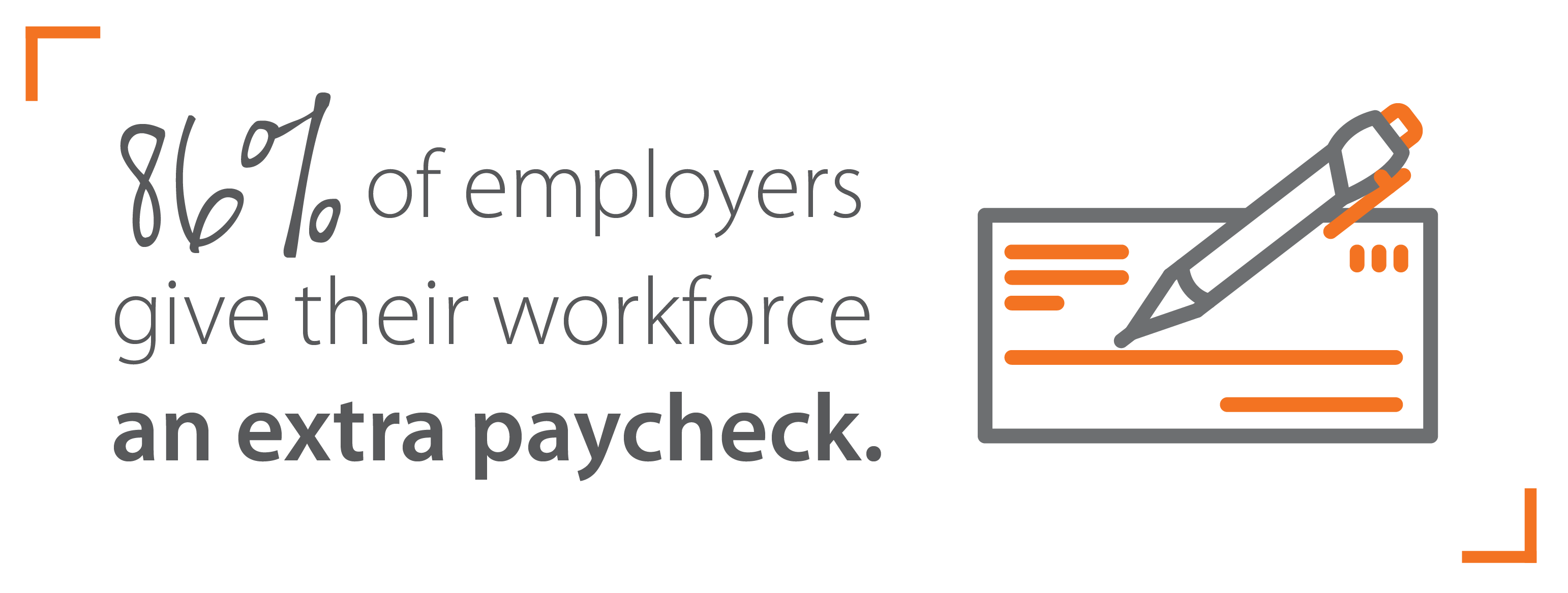If you pay employees bi-weekly, you normally have 26 pay periods a year. But 2020 brings you an extra one—thanks, leap year. True, an extra pay period isn’t exclusive to leap years, sometimes it just depends on which day of the week you pay your employees. But regardless of when it occurs, it can cause headaches for HR and payroll administrators who aren’t prepared.
There are a few ways to approach a 27-pay-period year, but the most important thing is to communicate your plan to your workforce. Make sure they understand what to expect so there aren’t any surprises surrounding their paychecks.
How to Pay Employees During a Year with 27 Pay Periods
Option 1: Everyone gets an extra paycheck.
Woo-hoo! The extra paycheck would be for the same amount as every other paycheck, but salaried employees would receive 27 instead of the typical 26. In effect, everyone gets a “raise” for the year
Going this route undoubtedly improves employee morale, so be sure to inform everyone what will happen so you can take credit. Also, it’s important to remind everyone this is a temporary bump in pay, and salaries will go back to normal in 2021. Paycor’s Payroll solution is equipped to assist with this option.

Source: ERC
Option 2: Prorate salaries over each pay period.
This option involves taking each salary and dividing it by 27 instead of 26, resulting in slightly less money per paycheck. However, an employee’s total salary will remain the same at the end of the year. Again, it’s important to communicate this to your workforce if you choose to go down this path. No one likes the surprise of a deflated paycheck.
Although this option is logical in that salaries remain the same, don’t be surprised if the individually reduced paychecks yield a dip in employee morale. If you choose this option, make sure you communicate it to your workforce early, so they’ll have enough time to make any necessary adjustments with automatic bill withdrawals, etc.
Other Payroll Factors to Consider
As an employer, there are a few things to keep in mind when deciding which option to choose.
If you select option 2, which lowers the amount an employee is paid each pay period, you’ll need to determine if that amount is now below the Fair Labor Standards Act (FLSA) threshold. If so, you may be required to pay that employee overtime.
Either way, keep a close eye on payroll taxes, wage garnishments and employee benefit deductions. You’ll most likely have to adjust the amount to account for the extra pay period or suppress it in the additional paycheck. Also be mindful of potentially over-funding 401(k), HSA and FSA accounts beyond the annual limit, in which case you’ll have to return the money to the employee. Paycor’s Payroll solution does this automatically for you.
However you choose to handle the 27 pay periods, do NOT skip a paycheck. Not only will you be violating wage laws, overall employee morale will plummet.
Optimize Your Payroll Process
If you need help optimizing your payroll process, contact our team for more information. Paycor’s Payroll and Tax solution can help you pay your employees accurately and on time while avoiding any compliance issues.









